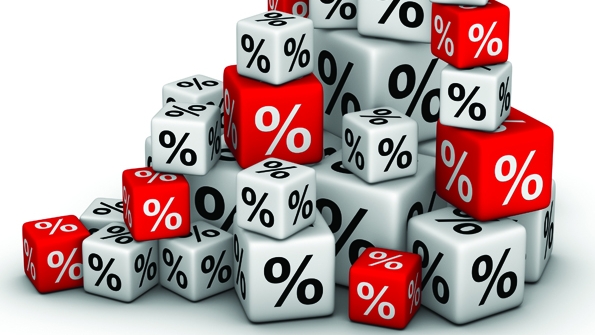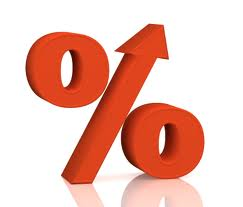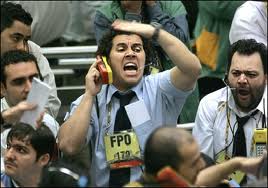 Why are rates so low? Let me count the reasons: flight to quality due to rising geopolitical risk, the Fed’s promise to keep short-term rates low for a long time, Japan’s massive monetary stimulus, the ECB’s decision to start printing money, weaker than expected US growth, no evidence of commodity or wage inflation in the US and the Fed’s continued purchasing of over half of all MBS! Rates have bottomed!
Why are rates so low? Let me count the reasons: flight to quality due to rising geopolitical risk, the Fed’s promise to keep short-term rates low for a long time, Japan’s massive monetary stimulus, the ECB’s decision to start printing money, weaker than expected US growth, no evidence of commodity or wage inflation in the US and the Fed’s continued purchasing of over half of all MBS! Rates have bottomed!
Tag Archives: Interest Rates
Greener Greenback
The dollar has been dramatically strengthening against most currencies of late and this will hurt US exports by making them more expensive in local currency and boosting imports, worsening our trade deficit. It’s happening because as our economy strengthens, interest rates will rise, making our currency more desirable to hold. By contrast, interest rate increases in Europe and Japan are years away. To wit, I’m shorting Yen and buying dollars.
Varying Interest
All interest rate increases aren’t created equal. A rise in 10-year treasury rates from 2%, where they are now, to 3% or 4% is a sign of improving business conditions and opportunities resulting from a strengthening economy. By contrast, a rise in rates from, say, 5% to 7% or 8% is a sign of an overheating economy that is creating systematic inflationary pressures and must be cooled.
Vicious Volatility
On days like today when stocks, bonds, precious metals, commodities and emerging markets all fall, portfolio diversification, doesn’t help. Remember that. Separately, financial markets have wiped out all of May and June’s gains not because QE3 will end, but because participants are unconvinced that the economy can withstand higher interest rates without slowing. And that will hurt household spending and ultimately corporate earnings. I’m diversifying into booze.
Houses for Nothing
According to CoreLogic, house prices rose 7.4% for the 12 months ending 11/12 (6.7% excluding short sales), the best numbers since 5/06! With 30-year mortgage rates at 3.4%, this means that the real cost of financing a home is NEGATIVE 4%! That’s like getting paid 4%/year to buy a house. As a result, it’s not at all surprising that existing home sales and new residential construction are rapidly improving.
Trickle Down Economics
By bailing out large financial institutions and deliberately trying to inflate the value of stocks, bonds, houses and commodities (by driving interest rates down to microscopic levels), central banks around the globe are probably increasing the wealth gap between rich and poor. After all, the poor don’t own homes or buy stock. That being said, the poor will have improved employment prospects as the economy improves. No policy is costless.
Low Blow
US Interest rates this low are harmful. Investors buy higher-yielding foreign securities (and speculate in commodities) and foreigners borrow in US dollars (not local currency), putting upward pressure on foreign exchange rates. To prevent this, central banks buy US Treasuries to reduce appreciation of their currency and keep their own rates extraordinarily low. Unfortunately, these efforts further lower interest rates, fueling more credit and asset bubbles around the globe.
Weak Growth, Low Rates
The output gap, the difference between what GDP is and what it could be, at 5.2% has never been this large this late in an economic recovery. Usually the gap has completely disappeared by the 2nd anniversary of the expansion which is why interest rates usually rise at that point. And, this is precisely why this time around the Fed is not going to tighten any time soon.
Dibilitating Debt Service
Interest on the federal debt is 1.4% of GDP; $200 billion. But, it is projected to ramp up fast for 2 reasons. 1st we add $1.4 tillion to it every year and 2nd interest rates are at historic lows. If the annual deficit remains unchanged for 3 years and if interest rates double interest on the debt would climb to close to 4% of GDP or $500 billion; and would consume about 15% of all federal spending.






